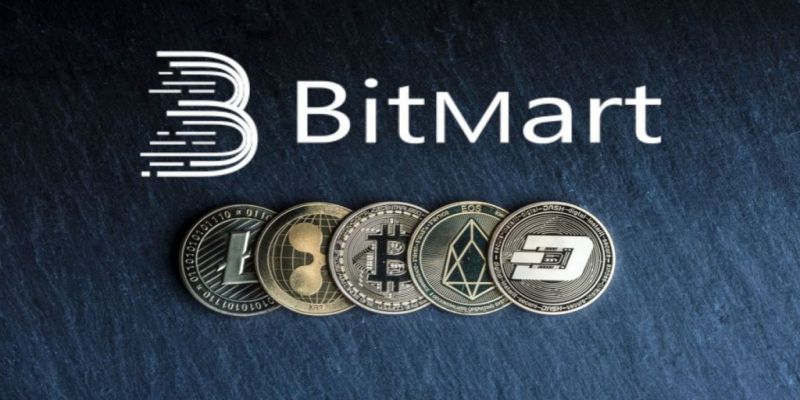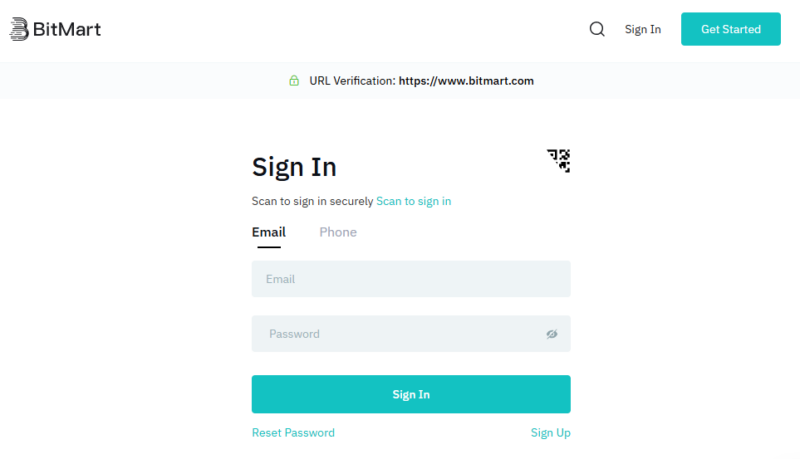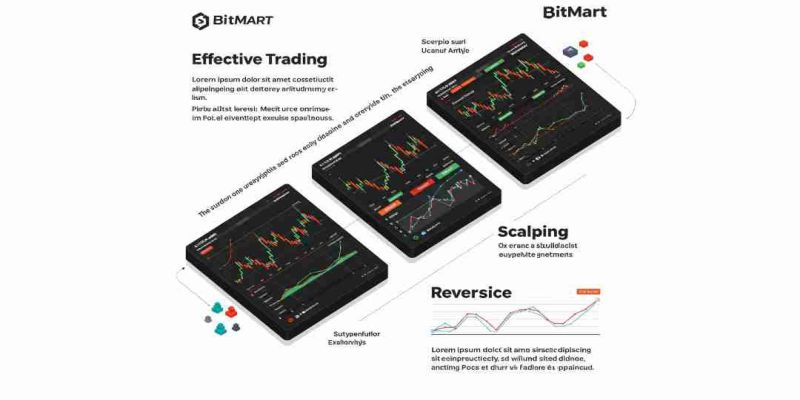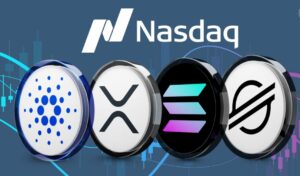
Margin trading has become one of the most popular investment methods on cryptocurrency exchanges, allowing investors to maximize their profits by leveraging borrowed funds. Among these platforms, BitMart margin trading stands out with numerous attractive features, catering to both beginners and experienced traders.
This guide covers everything you need to know about margin trading on BitMart, including how it works, how to use leverage effectively, trading strategies, and key risks to consider. If you’re looking to enhance your profits while managing risks, this article is for you!
Introduction to Margin Trading on BitMart
Margin trading is a powerful tool that allows investors to amplify their profits, but it also comes with significant risks. Before starting, it is crucial to understand how it works, along with its benefits and risks.
What is BitMart?
BitMart is a global cryptocurrency exchange that offers a wide range of trading features, including margin trading, staking, futures, and P2P trading. With a user-friendly interface, competitive fees, and high liquidity, BitMart supports over 500 trading pairs and serves millions of users worldwide, making it a suitable choice for investors looking to diversify their trading opportunities.
BitMart offers a robust margin trading platform with various features designed to enhance trading efficiency and flexibility. Below are the key features that make BitMart Margin Trading a great choice for both beginners and experienced traders:
- Support for multiple trading pairs: BTC/USDT, ETH/USDT, XRP/USDT, and more.
- High leverage options: BitMart offers leverage up to 5x or higher, depending on the trading pair.
- Competitive trading fees: Margin trading fees on BitMart are lower than on some major exchanges.
- User-friendly interface: Suitable for both beginners and professional traders.
- High security: BitMart implements advanced security measures to protect users’ assets.

What is Margin Trading on BitMart?
Margin trading on BitMart is a method where investors borrow funds from the exchange to trade with more capital than their actual balance. This allows traders to amplify potential profits but also comes with increased risks.
Benefits of BitMart Margin Trading:
- Increased profit potential: With leverage, traders can multiply their gains if the market moves in the expected direction.
- Portfolio diversification: Open multiple positions without needing full capital.
- Market trend utilization: Earn profits in both bullish (Long) and bearish (Short) markets.
- Flexible trading: Use borrowed funds to optimize trading opportunities.
Risks of Margin Trading on BitMart:
- Risk of liquidation: If the market moves against your position, your margin account can be liquidated.
- Interest cost on borrowed funds: Borrowing incurs interest, affecting overall profitability.
- Market volatility: The crypto market is highly volatile, increasing trading risks.
- Complex risk management: Traders must have a solid risk management plan to avoid large losses.
How Margin Trading Works on BitMart
To trade effectively, investors must understand the BitMart margin trading guide, including the borrowing mechanism, interest rates, and risk management strategies.
Borrowing Mechanism and Leverage
BitMart allows investors to borrow assets to trade with a larger capital than their actual balance.
For example, with 5x leverage, if you have 1,000 USDT, you can trade with 5,000 USDT.
However, high leverage amplifies both profits and risks.
The exchange requires an initial margin as collateral. If the collateral value drops below the required level, liquidation may occur.
Interest Rates and Collateral Management
Interest rates are charged hourly and vary by trading pair. Holding positions for a long time can increase borrowing costs.
Collateral must stay above the minimum threshold to avoid liquidation. If its value decreases, you need to add more funds to maintain your position.
Liquidation Risks and Risk Management
If the margin ratio falls below the required level, BitMart will automatically liquidate assets to recover the loan.
Ways to avoid liquidation:
- Monitor the margin ratio and add funds when necessary.
- Set Stop-Loss orders to reduce risk.
- Avoid excessively high leverage to minimize potential losses..
Step-by-Step Guide to Margin Trading on BitMart
Margin trading on BitMart allows investors to amplify their trading potential, but it requires careful execution to minimize risks. By following these steps, traders can navigate the process safely and effectively:
Step 1: Open a BitMart Account and Enable Margin Trading
- Visit BitMart and register an account.
- Complete KYC verification to access full-margin trading features.
- Enable margin trading in the Account Settings.

Step 2: Deposit Funds into the Margin Account
- Transfer funds from your spot wallet to your margin wallet.
- Select the right asset for trading.
Step 3: Borrow Funds and Choose Leverage
- Select a margin trading pair and choose a suitable leverage level.
- Pay attention to interest rates and loan duration to avoid unnecessary losses.
Step 4: Open a Long or Short Position
- Long (Buy): When expecting the price to rise.
- Short (Sell): When expecting the price to fall.
- Use different order types such as Market Order, Limit Order, and Stop-Loss to optimize trades.
Step 5: Manage Position and Take Profit/Stop-Loss
- Monitor market movements and margin ratio.
- Set Stop-Loss and Take-Profit to protect capital.
Step 6: Repay the Loan and Close the Trade
- When closing the position, repay the borrowed funds and interest.
- Check the balance to ensure no outstanding debt.
Effective Margin Trading Strategies on BitMart
Applying suitable trading strategies can help investors optimize profits while minimizing risks. Below are some of the most effective margin trading strategies that traders on BitMart can use:
- Trend Trading: Use indicators like Moving Averages (MA) and MACD to identify trends.
- Scalping: Open and close orders quickly within a short time to earn small but frequent profits.
- Reversal Trading: Identify trend reversals using RSI and Bollinger Bands.
- Technical Analysis: Combine candlestick patterns, trendlines, and support/resistance levels for better decisions.
Common Mistakes to Avoid in Margin Trading on BitMart
Margin trading can be highly profitable, but it also carries significant risks. Many traders, especially beginners, make costly mistakes that lead to unnecessary losses or even complete liquidation of their accounts. Below are the most common mistakes in margin trading on BitMart and how to avoid them.
Using Excessively High Leverage
Leverage amplifies both profits and losses. Using too much leverage can lead to account liquidation with just a small price movement.
Solution: Start with lower leverage (2x–3x) and monitor your margin level regularly.
Not Setting Stop-Loss Orders
Failing to set a stop-loss increases the risk of losing your entire capital if the market moves sharply against your position.
Solution: Always set a stop-loss based on your risk tolerance and use a trailing stop to protect profits.
Trading Based on Emotions
FOMO, panic, or trying to “chase losses” often lead to poor decision-making.
Solution: Stick to a clear trading plan, maintain discipline, and keep a trading journal to track key decisions.
Poor Risk Management
Investing all your funds in a single trade or ignoring the risk/reward ratio can result in significant losses.
Solution: Risk no more than 1-3% of your capital per trade and maintain a reasonable risk/reward ratio (at least 1:2).
Conclusion
Does BitMart support margin trading? Absolutely! BitMart margin trading provides a secure and efficient platform for traders to maximize their profits. However, margin trading carries significant risks, so investors should develop effective risk management techniques. If you’re a beginner, start with low leverage and consider practicing with a demo account before trading large amounts.
By using the right BitMart trading strategies and risk management tools, traders can navigate the crypto market efficiently while optimizing their trading performance.




























